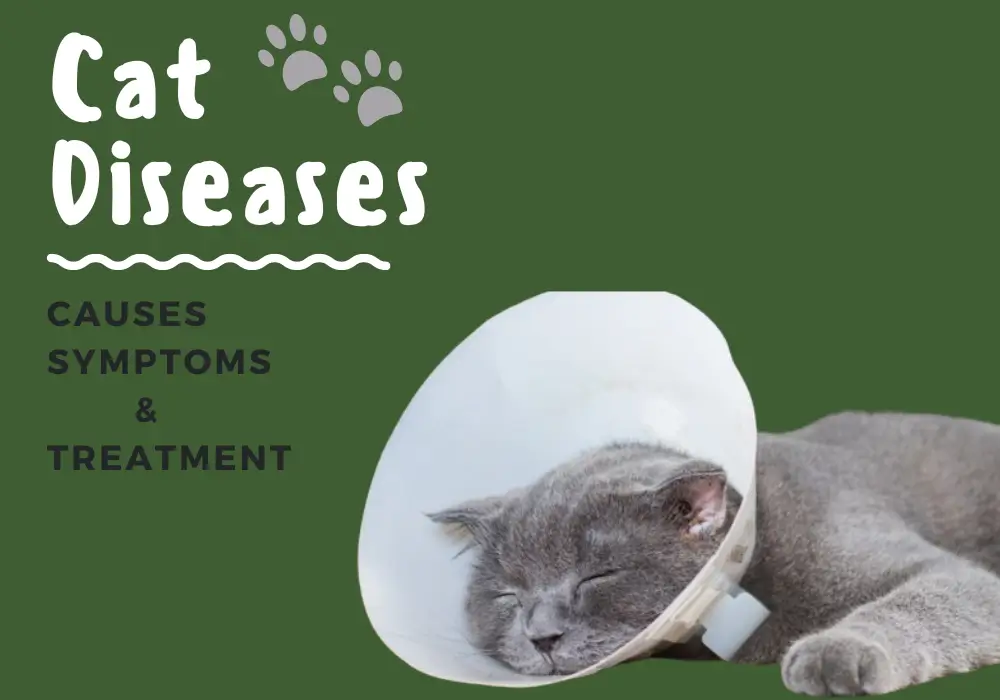Cats are beloved companions, but like any other living beings, they can fall ill. In Pakistan, where cats are often kept as pets, it’s essential to be aware of common feline health issues. Let’s explore some prevalent cat diseases, their causes, symptoms, and how to manage them.
1. Upper Respiratory Infections (URIs)
URIs are common among cats and are primarily caused by two viruses: Feline calicivirus and feline herpes virus. These pathogens invade a cat’s nose, throat, and sinuses, leading to symptoms such as runny nose, nasal discharge, congestion, fever, rapid breathing, and loss of appetite. Treatment typically involves antibiotics and fluids. Preventive measures include isolating the infected cat, limiting contact with other cats, timely vaccinations, and regular vet checkups.
- Causes: URIs are primarily caused by Feline calicivirus and feline herpes virus. Bacteria can also contribute.
- Symptoms: Runny nose, nasal discharge, congestion, fever, rapid breathing, and loss of appetite.
- Treatment: Antibiotics and fluids. Preventive measures include isolating the cat, limiting contact with other cats, timely vaccinations, and regular vet checkups.
2. Renal/Kidney Failure
Kidney failure disrupts water and blood regulation, affecting filtration and waste processes. Acute renal failure can occur due to accidental ingestion of antifreeze or illnesses affecting the kidney area. Symptoms include straining to urinate, lack of coordination, vomiting, not eating, seizures, and bad breath. Treatment involves removing toxins, restoring electrolyte balance, and managing kidney damage severity. Chronic renal failure (CRF) is irreversible but can be managed with dietary changes, medication, and IV fluids.
- Causes: Acute renal failure can occur due to accidental ingestion of antifreeze or illnesses affecting the kidney area.
- Symptoms: Straining to urinate, lack of coordination, vomiting, not eating, seizures, and bad breath.
- Treatment: Removing toxins, restoring electrolyte balance, and managing kidney damage severity. Chronic renal failure (CRF) is irreversible but can be managed with dietary changes, medication, and IV fluids.
3. Urinary Tract Diseases

Urinary tract diseases have no specific cause but may result from factors like cystitis, dehydration, bacterial infection, and high mineral ash content in cat dry food. Symptoms include blood in urine and painful urination. Prevention includes proper hydration, a balanced diet, and regular vet checkups.
- Causes: Factors include cystitis, dehydration, bacterial infection, and high mineral ash content in cat dry food.
- Symptoms: Blood in urine, painful urination.
- Prevention: Proper hydration, balanced diet, and regular vet checkups.
4. Diabetes
Diabetes in cats occurs due to insufficient insulin production or insulin resistance. Symptoms include increased thirst, frequent urination, weight loss, and lethargy. Management involves insulin injections, dietary adjustments, and monitoring blood glucose levels.
- Causes: Insufficient insulin production or insulin resistance.
- Symptoms: Increased thirst, frequent urination, weight loss, lethargy.
- Management: Insulin injections, dietary adjustments, and monitoring blood glucose levels.
5. Worms
Common worms in cats include roundworms, tapeworms, and hookworms. Symptoms include vomiting, diarrhea, weight loss, and a bloated abdomen. Treatment includes deworming medications and preventive measures.
- Types: Common worms include roundworms, tapeworms, and hookworms.
- Symptoms: Vomiting, diarrhea, weight loss, bloated abdomen.
- Treatment: Deworming medications and preventive measures.
6. Feline Gingivitis
Feline gingivitis is inflammation of the gums. Symptoms include red, swollen gums and bad breath. Regular dental care, professional cleanings, and a proper diet are essential for management.
- Causes: Inflammation of the gums.
- Symptoms: Red, swollen gums, bad breath.
- Management: Regular dental care, professional cleanings, and proper diet.
Conclusion
In Pakistan, cat owners should be aware of common health issues that affect their feline companions. Upper respiratory infections caused by viruses and bacteria are prevalent, leading to symptoms like sneezing, nasal discharge, and lethargy. Parasites such as fleas, intestinal worms, and ear mites also pose a risk. Regular veterinary check-ups, proper hygiene, and preventive measures are essential for maintaining the health and well-being of cats in Pakistan.
What are common cat diseases in Pakistan?
Common diseases include Feline Infectious Enteritis, Feline Upper Respiratory Infections, Feline Leukemia Virus (FeLV), Feline Immunodeficiency Virus (FIV), and Rabies.
What symptoms indicate Feline Infectious Enteritis?
Symptoms include severe vomiting, diarrhea, high fever, and lethargy. It’s highly contagious and can be fatal.
How can I recognize an Upper Respiratory Infection in my cat?
Look for sneezing, nasal congestion, runny eyes, coughing, and reduced appetite. These infections are highly contagious.

